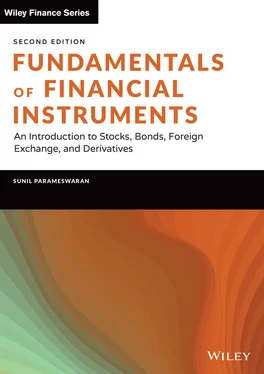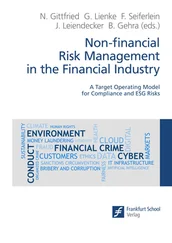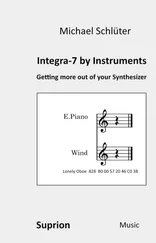20 CHAPTER 12: Orders and Exchanges IMPORTANT ACRONYMS MARKET ORDERS AND LIMIT ORDERS THE LIMIT PRICE THE LIMIT ORDER BOOKS ILLUSTRATION OF A LIMIT ORDER BOOK LIMIT ORDERS VERSUS MARKET ORDERS MARKETABLE LIMIT ORDERS TRADE PRICING RULES STOP-LOSS AND STOP-LIMIT ORDERS TRAILING STOP-LOSS ORDERS MARKET TO LIMIT ORDERS EQUIVALENCE WITH OPTIONS VALIDITY CONDITIONS GOOD TILL CANCELED (GTC) ORDERS GOOD TILL DAYS ORDERS ORDERS WITH QUANTITY RESTRICTIONS A POINT ON ORDER SPECIFICATION OPEN-OUTCRY TRADING SYSTEMS ELECTRONIC MARKETS VERSUS OPEN-OUTCRY MARKETS CALL MARKETS NOTES
21 CHAPTER 13: The Macroeconomics of Financial Markets ECONOMIC GROWTH GROSS DOMESTIC PRODUCT GDP VERSUS GNP INFLATION ADJUSTMENT TRANSNATIONAL COMPARISONS THE BIG MAC INDEX INFLATION TYPES OF INFLATION INTEREST RATES THE FEDERAL BUDGET DEFICIT MEASURES OF BUDGET DEFICITS THE PRIMARY DEFICIT FISCAL POLICY BUDGET DEFICITS AND THE CAPITAL MARKET THE ROLE OF THE CENTRAL BANK BUDGET DEFICITS AND MONETARY POLICY CROSS-BORDER BORROWING CENTRAL BANKS AND FOREIGN EXCHANGE MARKETS STERILIZED AND UNSTERILIZED INTERVENTIONS EXCHANGE RATES ISSUES WITH A RESERVE CURRENCY CROSS-BORDER IMPLICATIONS OF CENTRAL BANK ACTIONS QUANTITATIVE EASING QUANTITATIVE EASING VERSUS OPEN-MARKET OPERATIONS
22 CHAPTER 14: Interest Rate Derivatives FORWARD RATE AGREEMENTS (FRAs) SETTLING AN FRA DETERMINING BOUNDS FOR THE FRA RATE EURODOLLAR FUTURES CALCULATING PROFITS AND LOSSES ON ED FUTURES LOCKING IN A BORROWING RATE LOCKING IN A LENDING RATE THE NO-ARBITRAGE PRICING EQUATION CREATING A FIXED-RATE LOAN 30-YEAR T-BOND FUTURES CONTRACTS CONVERSION FACTORS INTEREST RATE OPTIONS STATE PRICES CALLABLE AND PUTABLE BONDS CAPS, FLOORS, AND COLLARS CAPTIONS AND FLOORTIONS NOTES
23 Sources and ReferencesCHAPTER 1 CHAPTER 2 CHAPTER 3 CHAPTER 4 CHAPTER 5 CHAPTER 6 CHAPTER 7 CHAPTER 8 CHAPTER 9 CHAPTER 10 CHAPTER 11 CHAPTER 12 CHAPTER 14
24 Index
25 End User License Agreement
1 Chapter 1 TABLE 1.1 Commercial Banks and Depositories (Similarities and Differences)
2 Chapter 2 TABLE 2.1 The Compounding Process TABLE 2.2 TABLE 2.3 Vector of Cash Flows TABLE 2.4 Present and Future Values of the Cash Flows TABLE 2.5 Vector of Cash Flows TABLE 2.6 An Amortization Schedule TABLE 2.7 Amortization with a Balloon Payment TABLE 2.8 Equal Principal Repayment Schedule
3 Chapter 3TABLE 3.1 Asset ReturnsTABLE 3.2 Earnings RecordTABLE 3.3 Dividend Distribution: The Case of Noncumulative SharesTABLE 3.4 Dividend Distribution: The Case of Cumulative SharesTABLE 3.5 Valuation of Cash Flows as Per the Three-Stage ModelTABLE 3.6 Prices of the Constituent Stocks on the Base DateTABLE 3.7 Prices of the Constituent Stocks on the Following DayTABLE 3.8 Prices of the Constituent Stocks on the Following Day, Assuming a ...TABLE 3.9 Theoretical Post-Split Stock PricesTABLE 3.10 Prices of the Component Stocks of the Reconstituted IndexTABLE 3.11 Prices of the Constituent Stocks on a Given DayTABLE 3.12 Prices on the Following Day: Two Different ScenariosTABLE 3.13 Prices, Number of Shares Outstanding, and Market Capitalization o...TABLE 3.14 Prices, Number of Shares Outstanding, and Market Capitalization o...TABLE 3.15 Market Capitalization of the Component Stocks of the Reconstitute...TABLE 3.16 Prices of the Stocks Constituting an Equally Weighted Index at th...TABLE 3.17 Prices of the Stocks Constituting an Equally Weighted Index on th...TABLE 3.18 Components of a Value-weighted IndexTABLE 3.19 Components of a Value-weighted IndexTABLE 3.20 Tick Sizes on the TSETABLE 3.21 Illustration of Uptick, Downtick, and Zero Tick
4 Chapter 4TABLE 4.1 Illustration of LeverageTABLE 4.2 Illustration of a Tax ShieldTABLE 4.3 Calculation of the NumeratorTABLE 4.4 Calculation of the DenominatorTABLE 4.5 Investment Grade RatingsTABLE 4.6 Speculative Grade RatingsTABLE 4.7 Cash Flows from a Two-Year BondTABLE 4.8 Prices of Plain-Vanilla Bonds with Varying Times to MaturityTABLE 4.9 Vector of Spot RatesTABLE 4.10 Computation of DurationTABLE 4.11 Computation of ConvexityTABLE 4.12 An Immunized PortfolioTABLE 4.13 Index Levels, Inflation Rates, and Index RatiosTABLE 4.14 Cash Flows for a P-LinkerTABLE 4.15 Cash Flow for a C-Linker
5 Chapter 5TABLE 5.1 Major Central BanksTABLE 5.2 The District Federal Reserve BanksTABLE 5.3 Bids in Ascending Order of YieldTABLE 5.4 Day-Counts for Valuing the Term CD
6 Chapter 6TABLE 6.1 Observed Futures PricesTABLE 6.2 Margin Account of the LongTABLE 6.3 Margin Account of the ShortTABLE 6.4 Illustration of a Contango MarketTABLE 6.5 Illustration of a Backwardation MarketTABLE 6.6 Spot Prices Prior to ExpirationTABLE 6.7 Spot Prices and Delivery-Adjusted Spot Prices at ExpirationTABLE 6.8 Prices, Number of Shares Outstanding, and Market CapitalizationTABLE 6.9 Prices, Number of Shares Outstanding, and Market Capitalization on...
7 Chapter 7TABLE 7.1 Illustration of Put-Call Parity: Strategy 1TABLE 7.2 Illustration of Put-Call Parity: Strategy 2TABLE 7.3 Illustration of Put-call Parity for a Dividend-paying StockTABLE 7.4 Lower Bound for Call OptionsTABLE 7.5 Payoffs and Profits for Long Call and Put PositionsTABLE 7.6 Payoffs and Profits for Short Call and Put PositionsTABLE 7.7 Profit from the Hedged Position for Various Values of the Terminal...TABLE 7.8 Profit from the Hedged Position for Various Values of the Terminal...TABLE 7.9 Payoffs from a Bull Spread with CallsTABLE 7.10 Payoffs from a Bull Spread with PutsTABLE 7.11 Profit from the Bull SpreadTABLE 7.12 Payoffs from a Bear Spread with CallsTABLE 7.13 Payoffs from a Bear Spread with PutsTABLE 7.14 Profit from the Bear SpreadTABLE 7.15 Payoffs from a Long Butterfly SpreadTABLE 7.16 Premiums for Call OptionsTABLE 7.17 Profit from the Butterfly SpreadTABLE 7.18 Payoffs from a Long StraddleTABLE 7.19 Profit from a Long StraddleTABLE 7.20 Payoffs from an Out-of-the-money Long StrangleTABLE 7.21 Payoffs from an In-the-money Long StrangleTABLE 7.22 Profit from a Long Strangle
8 Chapter 8TABLE 8.1 Symbols for Major Currencies
9 Chapter 9TABLE 9.1 Observed Values for LIBORTABLE 9.2 Observed Values for LIBORTABLE 9.3 Mortgage Rates in the Presence of a CapTABLE 9.4 Observed Values for LIBORTABLE 9.5 Monthly Payments & Outstanding BalancesTABLE 9.6 Illustration of Negative AmortizationTABLE 9.7 Monthly Payments for a GPMTABLE 9.8 Amortization Schedule for a GPMTABLE 9.9 Mortgage Loans, Their Rates, and Times to MaturityTABLE 9.10 Calculation of WAC and WAMTABLE 9.11 Amortization Schedule in the Absence of PrepaymentsTABLE 9.12 Amortization Schedule in the Presence of PrepaymentsTABLE 9.13 Cash Flows for a Security with a Par Value of $1.000TABLE 9.14 Bond Equivalent YieldsTABLE 9.15 Cash Flows Assuming 100 PSATABLE 9.16 Cash Flows Assuming 200 PSATABLE 9.17 Amortization for Tranche ATABLE 9.18 Amortization for Tranche BTABLE 9.19 Amortization for Tranche CTABLE 9.20 Amortization for Tranche DTABLE 9.21 Maturity and Average Life of the SecuritiesTABLE 9.22 Amortization for Tranche A in the Presence of a Z-bondTABLE 9.23 Amortization for Tranche B in the Presence of a Z-bondTABLE 9.24 Amortization for Tranche C in the Presence of a Z-bondTABLE 9.25 Amortization for the Z-BondTABLE 9.26 Maturity and Average Life of the Securities in the Presence of a ...TABLE 9.27 Coupon Rates for a Sequential Pay CMOTABLE 9.28 Principal Payments for a 100 PSA to 250 PSA RangeTABLE 9.29 Principal Payments at 150 PSATABLE 9.30 Principal Payments at 250 PSATABLE 9.31 Principal Payments at 0 PSATABLE 9.32 Principal Payments at 400 PSA
10 Chapter 10TABLE 10.1 6-M Libor as Observed at Six-Monthly IntervalsTABLE 10.2 Amounts Payable by the Two CounterpartiesTABLE 10.3 Cash Flows for a Fixed-Fixed Currency SwapTABLE 10.4 Bid–Ask Quotes for Euro-denominated IRSTABLE 10.5 Observed Term StructureTABLE 10.6 Discount Factors as per Market ConventionTABLE 10.7 The Term Structure of Interest Rate After Two MonthsTABLE 10.8 Term Structure for US Dollars and the Euro
Читать дальше












